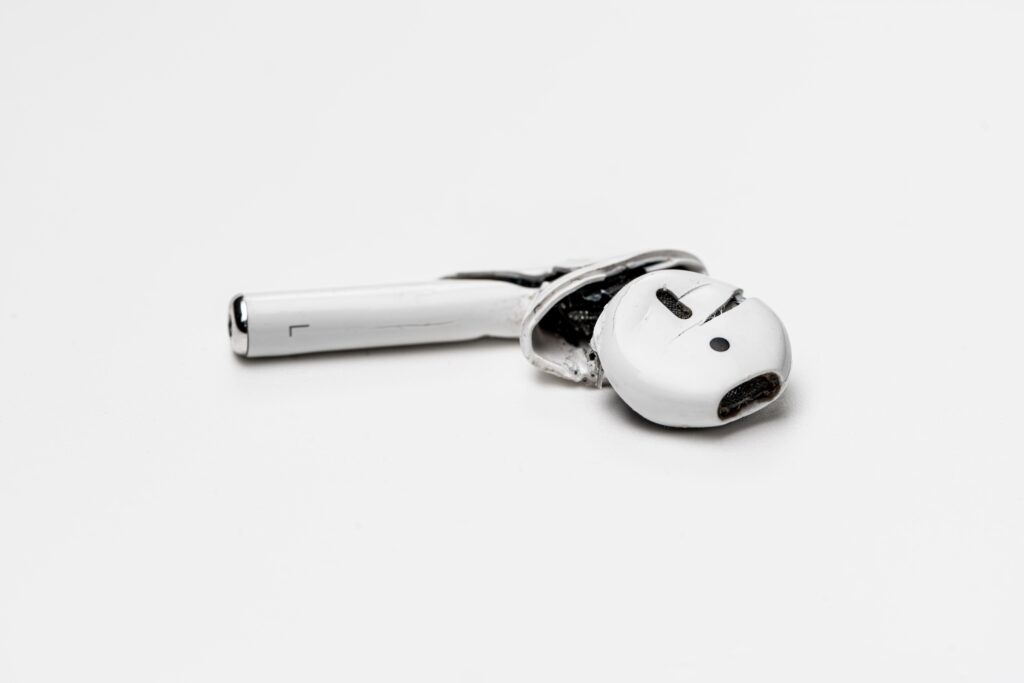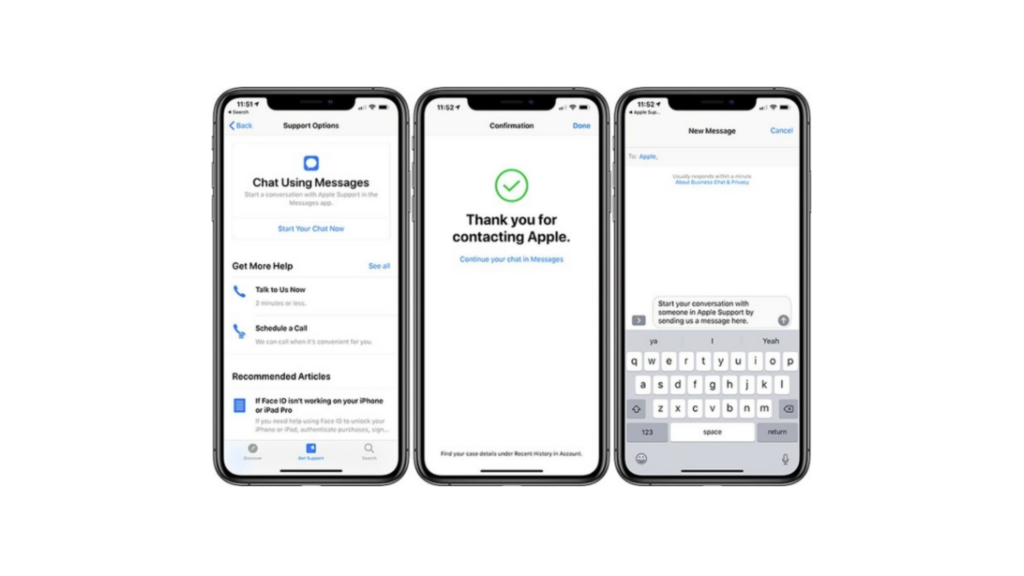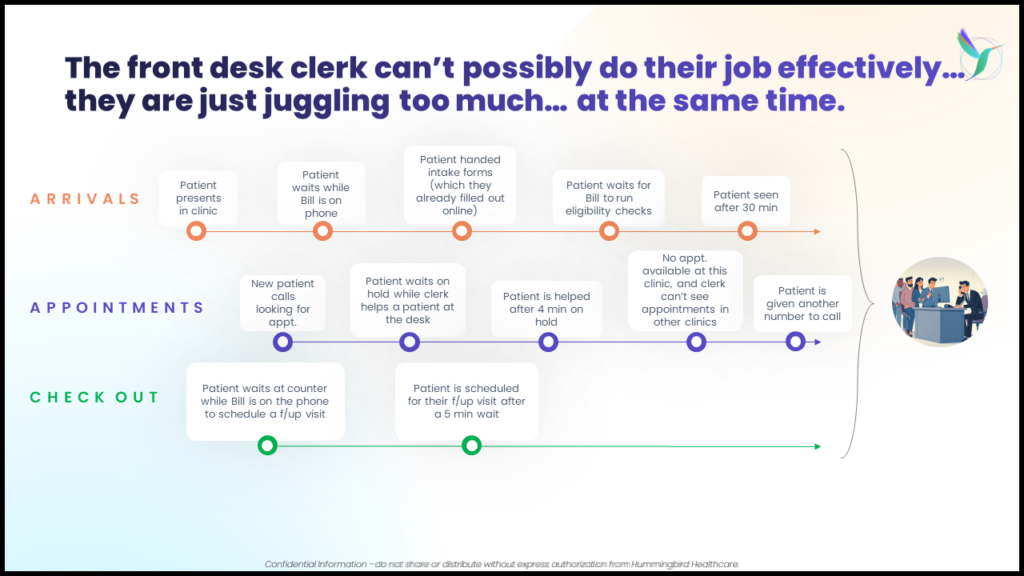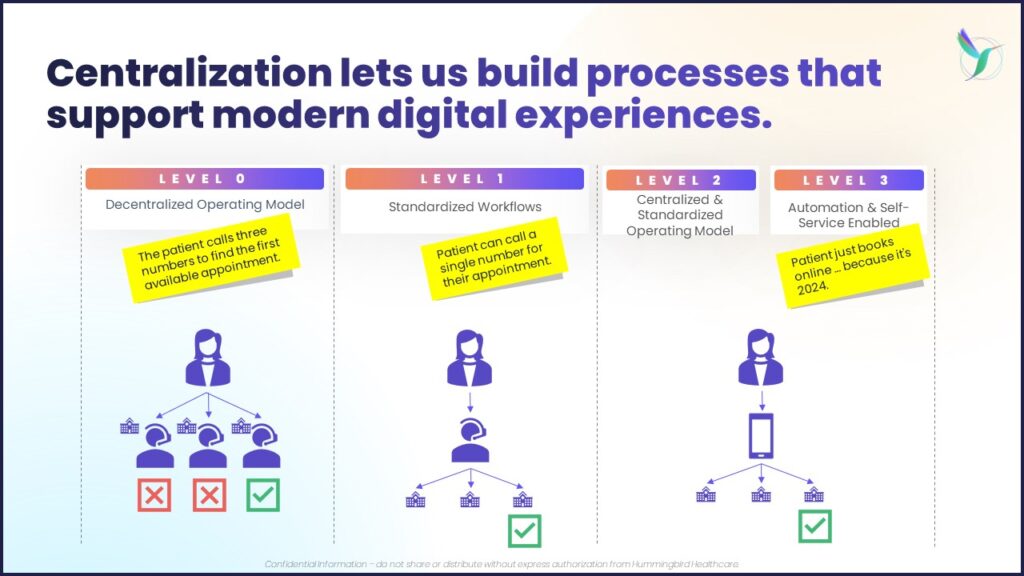
I took my 90-year-old grandma out for a nice Memorial Day brunch. It was a wonderful afternoon.
It wasn’t until I was back home 60 miles away that I realized my AirPods must have slipped out of my pocket. After a few phone calls to the hotel and some help from Find My, Trevor, the nice man working hotel security, tracked them down for me.
I then spent the next 15 minutes trying to communicate my home address, email, and credit card number (for FedEx) on a jumbled line. At one point I said, “I’m standing outside of my gym, can I just text you?” No, he was on a land line. It didn’t matter – he found my AirPods, and I was relieved.
The next day I had to make another customer service call. This time I needed to get my 2-year-old into the doctor for yet another ear infection (what the heck is this little guy doing at preschool?!).
You know where this is going, and you’re right – it took me lots of phone calls! I asked if I could text, and, after the front desk finished laughing at the request, we finally made an appointment. When we arrived, we waited 45 minutes – and waiting is every two-year-old’s favorite pastime.
We love our pediatrician. She takes good care of our kids. But I’ve got to say, the customer service experience just to see the doctor we love always sours my perception of the overall experience.
And then my AirPods came back … broken. Bummer. So, I reached out to Apple thinking I was in for my third mediocre customer service experience of the week. But Apple doesn’t roll that way. I was immediately asked if I wanted to text. Of course I wanted to text!

The entire experience was easy and fast. No unnecessary interactions, no landlines, and they already knew who I was and what I needed. I have a new AirPod on the way. What would it take to bring that Apple experience to healthcare?
We have some ideas.
First, let me grossly oversimplify what’s required: We must create a modern customer service framework.
Today, most doctors’ offices work a lot more like Trevor’s security guard operation than they do like Apple.
But healthcare is a lot more complex than Trevor’s world. So much has to happen before we can deliver care. We have to collect patient info, process the referral, triage questions, ensure the coverage is valid, etc., etc.

The result is that well-meaning and overworked staff at my pediatrician’s office are trying their hardest to do all of the stuff … and can’t possibly keep up.
So, what’s the solution?
Well, it turns out that a huge percentage of care in America is delivered by large systems (by some measures up to 78% of doctors are employed by hospitals or other large entities). We can leverage that scale to build an Apple-esque operation.
While Apple is big and complex, their customer service experience emphasizes small and quick interactions. When I’m texting with Apple, it feels personal. Healthcare on the other hand seldom feels small or personal. As patients, we’re constantly on hold, being transferred, waiting on call backs … we feel the largeness of the system we’re interacting with.
So how do we make big healthcare feel personal?
By centralizing and standardizing the way things happen while also making doctors’ lives easier, we make this Apple-like experience possible.
With that lens in mind, we use scale to cluster specialty-specific operations together while centralizing work. Now we can always pick up the phone when a patient calls, while also helping the patient get what they need in real time.

And these operational clusters also create the foundation for modern technology. It turns out that once we’ve centralized and standardized access, we can layer on technology that hospitals already have to create the experience patients want … which for 92% of people means scheduling online instead of calling and sitting on hold. *
And while I shouldn’t have nice things, you should. Hopefully the next time your kid catches that ear infection, you’re just a text away from your nearest doctor.
*according to a Kyruus Health 2024 study